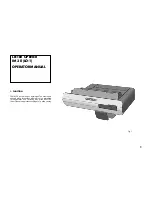
NACE GLOSSARY OF CORROSION-RELATED TERMS
©
2002, NACE International. This publication may not be reprinted without the written consent of NACE International.
Page 3 of 18
CASE HARDENING
Hardening a ferrous alloy so that
the outer portion, or case, is
made substantially harder than
the inner portion, or core.
Typical processes are
carburizing, cyaniding, carbo-
nitriding, nitriding, induction
hardening, and flame hardening.
CASEIN PAINT
Water-thinned paint with vehicle
derived from milk.
CATALYST
A chemical substance, usually
present in small amounts relative
to the reactants, that increases
the rate at which a chemical
reaction (e.g., curing) would
otherwise occur, but is not
consumed in the reaction.
CATHODE
The electrode of an
electrochemical cell at which
reduction is the principal
reaction. Electrons flow toward
the cathode in the external
circuit.
CATHODIC CORROSION
Corrosion resulting from a
cathodic condition of a structure,
usually caused by the reaction of
an amphoteric metal with the
alkaline products of electrolysis.
CATHODIC
DISBONDMENT
The destruction of adhesion
between a coating and the
coated surface caused by
products of a cathodic reaction.
CATHODIC INHIBITOR
A chemical substance that
prevents or reduces the rate of
the cathodic or reduction
reaction.
CATHODIC
POLARIZATION
The change of the electrode
potential in the active (negative)
direction caused by current
across the electrode/electrolyte
interface. [See
Polarization.
]
CATHODIC PROTECTION
A technique to reduce the
corrosion of a metal surface by
making that surface the cathode
of an electrochemical cell.
CATHOLYTE
The electrolyte adjacent to the
cathode of an electrochemical
cell.
CATION
A positively charged ion that
migrates through the electrolyte
toward the cathode under the
influence of a potential gradient.
CAVITATION
The formation and rapid collapse
of cavities or bubbles within a
liquid which often results in
damage to a material at the
solid/liquid interface under
conditions of severe turbulent
flow.
CELL
[See
Electrochemical Cell.
]
CEMENTATION
The introduction of one or more
elements into the surface layer of
a metal by diffusion at high
temperature. (Examples of
cementation include carburizing
[introduction of carbon], nitriding
[introduction of nitrogen], and
chromizing [introduction of
chromium].)
CHALKING
The development of loose,
removable powder (pigment) at
the surface of an organic coating,
usually caused by weathering.
CHECKING
The development of slight breaks
in a coating which do not
penetrate to the underlying
surface.
CHEMICAL CONVERSION
COATING
An adherent reaction product
layer on a metal surface formed
by reaction with a suitable
chemical to provide greater
corrosion resistance to the metal
and increase adhesion of
coatings applied to the metal.
(Example is an iron phosphate
coating on steel, developed by
reaction with phosphoric acid.)
CHEVRON PATTERN
A V-shaped pattern on a fatigue
or brittle-fracture surface. The
pattern can also be one of
straight radial lines on cylindrical
specimens.
CHLORIDE STRESS
CORROSION CRACKING
Cracking of a metal under the
combined action of tensile stress
and corrosion in the presence of
chlorides and an electrolyte
(usually water).
COAT
One layer of a coating applied to
a surface in a single continuous
application to form a uniform film
when dry.
COATING
A liquid, liquefiable, or mastic
composition that, after
application to a surface, is
converted into a solid protective,
decorative, or functional adherent
film.
Summary of Contents for CP 1
Page 1: ...CP 1 Cathodic Protection Tester Course Manual February 2005 NACE International 2000 ...
Page 265: ......
Page 266: ......
Page 267: ......
Page 268: ......
Page 301: ...RP0169 2002 32 NACE International ISBN 1 57590 035 1 ...
Page 535: ...TM0101 2001 24 NACE International ISBN 1 57590 137 4 ...
















































